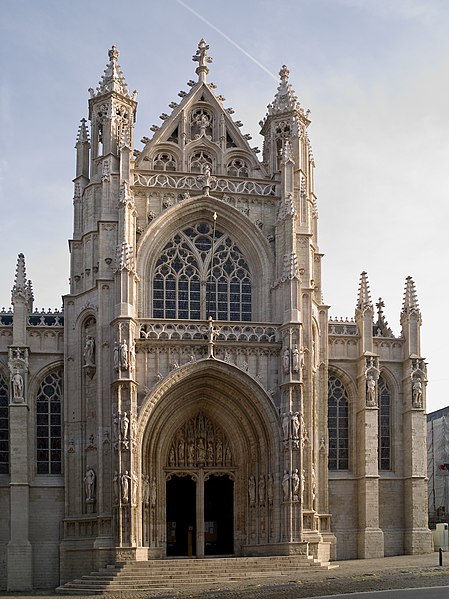How do Romanesque and Gothic Cathedrals express different understandings about religious theology?
Romanesque and Gothic cathedrals express many different and opposite ways of religious theology. The Romanesque time was an era or protection and judgment, but the Gothic era was full of light and happiness. The different times led to different ways of living and theology; thus the two different eras has different architecture to base how the time was to their buildings.
The Romanesque time was a time filled with invaders trying to attack land and take over the Roman Empire. This period began in the 9th century and ended in the 11th century. The churches and cathedrals at this time had many small windows so invaders couldn’t break in and the church and everyone in it was more safe (see figure 1). The churches at this time were considered to be more of a protection area rather than a place of worship because of that stage in time. The Romanesque architecture also included many buildings with arched curves in them, also to protect from invaders (see figure 2). This time in the Roman Empire was a time of fear and protection, rather than the light from the Gothic times.
The Gothic times in the Roman Empire began in the 12th century and ended in the 14th century. The architecture was much different in these times that the Romanesque era. The cathedrals had huge windows filled with stain glass (see figure 3). This time was a time of light and stability. Since there were much less invaders, the architects were able to make windows and churches larger and brighter with stain glassed windows (see figure 4). This time in the Empire was full of happiness and faith because invaders were gone, and they could live happily and be more religious.
A huge difference between the Romanesque architecture and the Gothic architecture is the height and light factors. The Romanesque times were all about protection, so the ability to be dark and fit in tiny spaces was very important (see figure 5). They did not care about how it looked per say, they were more interested in keeping invaders away and people alive by protection. The Gothic times was all about the light of God and reaching high spaces being closer with God. The cathedrals and churches were very open and bright, letting in the light from God (see figure 6). They were interested in being closer with God, since they were at a good point of living at the time.
The images show that there is a very different style of building and architect at the different stages of the Roman Empire. The way that live is being lived and anything bad happening to the people or empire is expressed through the ways of the buildings. The Romanesque time was sad and judgmental, so the churches are dark and low; but the gothic times was filled with lights and high open buildings because it was a good time in the empire.
Apendix:
Figure 1-
Figure 2-
Figure 3-
Figure 4- Cathedral Notre-Dame de Reims. (n.d.). Wikimedia Commons. Retrieved April 27, 2011, from commons.wikimedia.org/wiki/File:
Figure 5-
Figure 6-
.jpg/800px-Nivelles_JPG00_(6).jpg)




